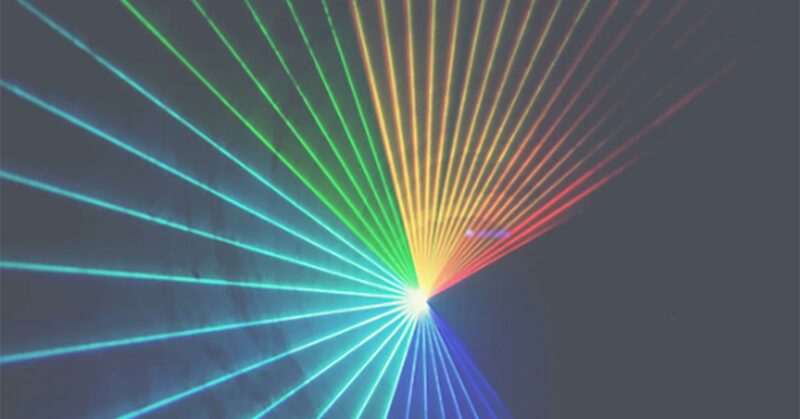In recent years, Raman spectroscopy has become a valuable tool in qualitative and quantitative chemical analysis for process analysis as the technology offers convenient in-situ sampling interfaces, continuous in-line measurements, and high spectral specificity. Raman is used across a range of industries including pharmaceuticals, oil & gas, bio processing, specialty chemical, food and beverage process control, plastics and polymers, and other process development sectors. Raman is also advantageous because it’s a non-destructive analytical technique – it can be used to investigate the molecular composition of solids, liquids, and gases without damaging the chemical mixture or discarding grab samples.
One of the most important considerations when selecting/evaluating a Raman analyzer is the laser which serves as an “excitation source” illuminating the chemical sample to facilitate the Raman scatter. The chosen laser wavelength will have an impact on Raman intensity and background fluorescence (and in Raman microscopy applications, spatial resolution as well). Lasers have proven incredibly valuable as light sources for Raman, as they are more intense and more easily focused on to a small region. Early Raman measurements used gas emission lines as narrowband excitation sources, but it was not until lasers started being used as the excitation source that Raman started becoming practical outside of a specialized lab.
Quality Raman measurements put very specific requirements on several aspects of laser performance but choosing the best excitation wavelength for a given application is not always obvious. This blog will focus on some of the parameters one should consider evaluating when optimizing a Raman experiment or application.
Considerations for excitation wavelength
It is important to note that Raman is a low energy technique. It relies on rare “inelastic” photon interactions in the sample material. When performing a Raman experiment, the vast majority of photons that are scattered by target molecules undergo an “elastic” interaction and thus provide no useful chemical information.
Fluorescence interference associated with Raman spectroscopy challenges users, as it is a natural and unavoidable phenomenon that impedes Raman analysis. Specifically for bioprocess monitoring applications, fluorescence interference is a key challenge due to complex bio-matrices. The fluorescence signal is often more intense than the Raman signal, so it conceals the Raman signal characteristics. It also contributes noise without contributing useful information. However, if the Raman signal can be detected over the fluorescence background, analyses can still be performed. Therefore, a Raman spectrometer with sufficiently high sensitivity and measurement speed will mitigate these fluorescence challenges. Tornado’s HTVS™ technology overcomes the key challenge associated with Raman spectroscopy as it detects 10 to 30 times more Raman signal, enabling significantly faster measurements or higher signal-to-noise ratio spectra than a conventional spectrometer. This advantage allows quicker and more reliable decision-making in a process environment to circumvent excursions, therefore eliminating (or at least minimizing) the disruptions that can occur because of those excursions.
So how does one select the appropriate laser wavelength for a particular application? There are many different excitation options, but the three most widely used are 532 nm, 785 nm and 1064 nm.
532 nm lasers
These lasers are commonly used for gas phase measurements and for other non-fluorescing samples. They are one of the oldest and most established type of diode pumped solid state lasers (DPSSLs). Excitation with a 532 nm laser is particularly good for studying metal oxides and inorganic materials as low fluorescence is common for many of these sample types. Excitation with 532 nm yields a higher Raman signal with 532 nm due to the details of the Raman scattering mechanism, and this higher intrinsic signal strength is often needed when using a conventional spectrometer with an inefficient physical slit. However, with Tornado’s High-Throughput Virtual Slit (HTVS™) you can get significant signal boost without resorting to short laser wavelengths.
1064 nm lasers
Raman spectroscopy lasers with longer wavelengths are preferred for samples known to suffer from high fluorescence background, as the amount of fluorescence drops with increasing wavelength and decreasing photon energy. Diode lasers emitting at 1064 nm are often used for highly fluorescing materials, although the Raman signal also drops with longer wavelengths, so 1064 nm Raman systems require a longer amount of time to get adequate levels of Raman signal. Furthermore, detection of the Raman-scattered photons from a 1064 nm laser require short-wave infrared sensors like InGaAs arrays, as CCDs are effectively blind to wavelengths above 1100 nm, but InGaAs sensors are more expensive and have greater intrinsic noise than CCD cameras. One other salient point is that higher laser powers are often needed to achieve adequate measurements with a 1064-nm laser, which could bring up safety concerns in a production area if a Class IV laser is used. The higher energy density might also increase the risk of chemical alteration of the sample even with transient exposure.
785 nm lasers
The 785 wavelength excitation is a great compromise delivering stronger Raman signal than 1064 nm and weaker fluorescence than 532 nm. It is also one of the most popular and common wavelengths used as it performs effectively for over 90% of active Raman materials with manageable fluorescence. Deep-depletion back-thinned CCDs (like those used in Tornado Raman analyzers) have good detection efficiency for both the fingerprint and CH-stretch regions of the Raman spectrum with 785 nm excitation. A Raman measurement that is intended for quantification needs to be fast, accurate and precise, encapsulating the best possible resolution in both wavelength and intensity. At Tornado, our 785 nm Raman analyzers offer the best balance between scattering efficiency, influence of fluorescence, detector efficiency, and availability of cost-efficient and compact, high-quality laser sources.
Laser stability
Much of the quantitative power of Raman methods comes from measuring changes in Raman spectral data over time, assuming that this is due to chemical or physical changes in the sample under study. However, a change in the Raman spectrum will also result if the excitation laser changes power or wavelength during the measurement. Hence, it is pivotal to have a laser source which is highly stable in both power output and wavelength, so that users have full confidence that any observed change in the Raman peaks is due to true changes in the sample, not a side-effect of a misbehaving laser. Opinions vary regarding the required level of stability for quality Raman measurements, and it certainly depends on the details of the process application, but as a general rule of thumb, laser wavelength variations should not cause Raman peak positions to vary by more than ±0.1 cm-1, and the laser power output should not change by more than ±1%. A variety of data analysis techniques can be applied to compensate for Raman excitation lasers which fluctuate in wavelength or power or both, but there is a limit to the ability to compensate with chemometrics without introducing uncertainty. Inherently stable lasers will usually provide better Raman data.
How can you safely use a laser in a hazardous zone?
Lasers can be hazardous, and must be used following best practices for eye safety and other potential hazards. In some process scenarios, there may be explosive gases present in the atmosphere and all of the laser energy focussed down onto a small area can serve as an ignition source.
In the particular case of Raman spectroscopy, how do you ensure that the excitation laser energy does not ignite the flammable gases in the atmosphere that surround the sample point? At Tornado, we very much favour the regulatory category “” which means that the laser source is inherently safe, and thus easier and less expensive to install and maintain. As a result, the risk of an explosion is mitigated due to the inherent safety of the laser.
For customers looking for the ability to meet Zone 0 operating environments, Tornado’s OPIS 35 ATEX Safe Laser provides unequalled Raman sensitivity, safety, and convenience even at low laser power settings and ensures full compliance for ATEX Zone 0, 1, and 2 hazardous environments.
For more information on hazardous zones and IECEx/ATEX guidelines, and Tornado’s turnkey solution, we encourage you to view our webinar, Inherently Safe Raman Measurements for Hazardous Zones.
Conclusion
Among the three standard wavelengths for Raman excitation lasers, the balance of Raman signal strength and fluorescence reduction makes 785 nm the most versatile choice. When combined with the unrivaled sensitivity of Tornado’s HTVS™-enhanced analyzers, 785 nm excitation is able to deliver the best Raman spectral data for the vast majority of process applications.
If you would like to discuss your application and are considering adopting Raman spectroscopy as a process analytic technology, please contact us at info@tornado-spectral.com
Source: Tornado Spectral Systems

